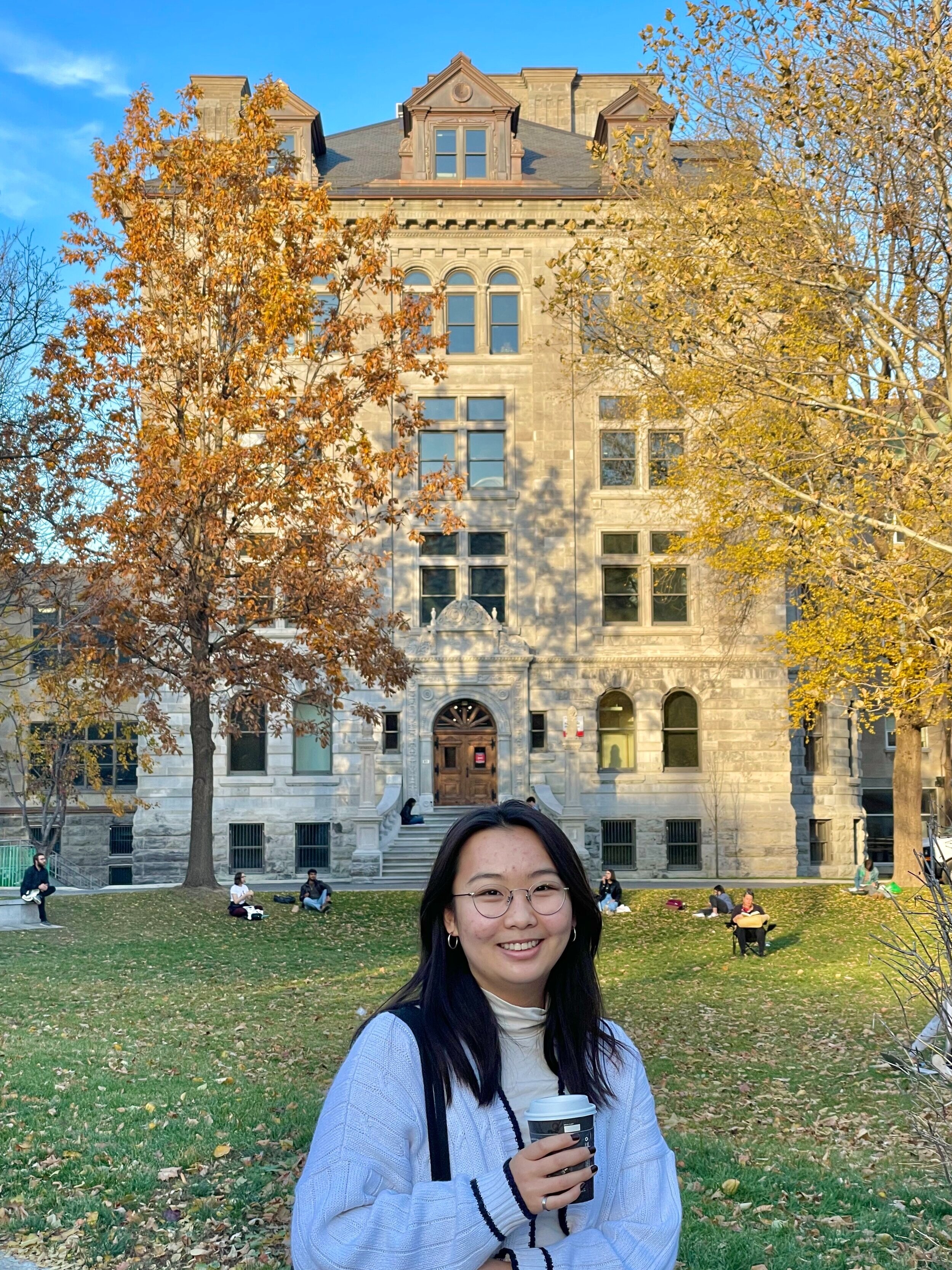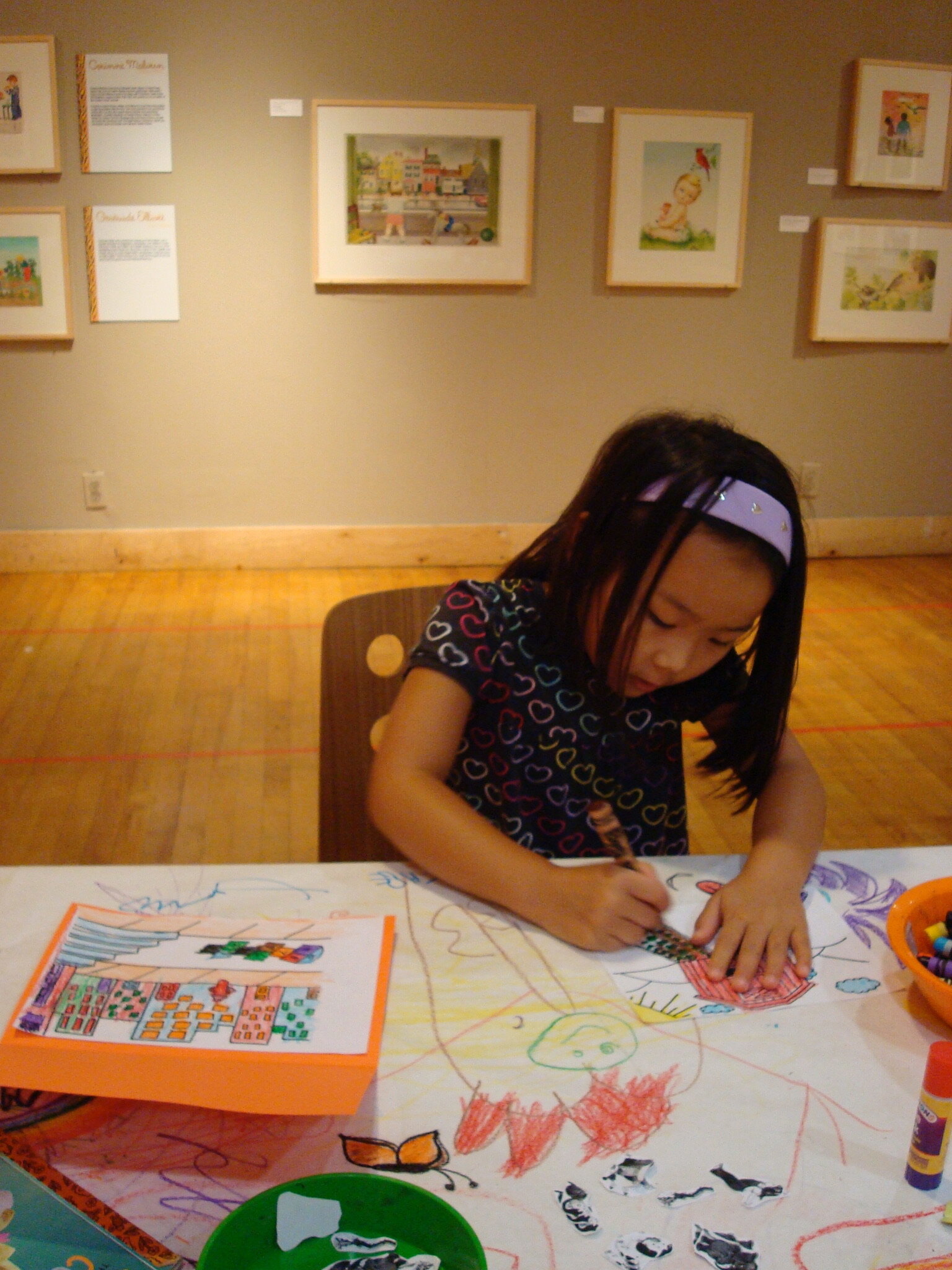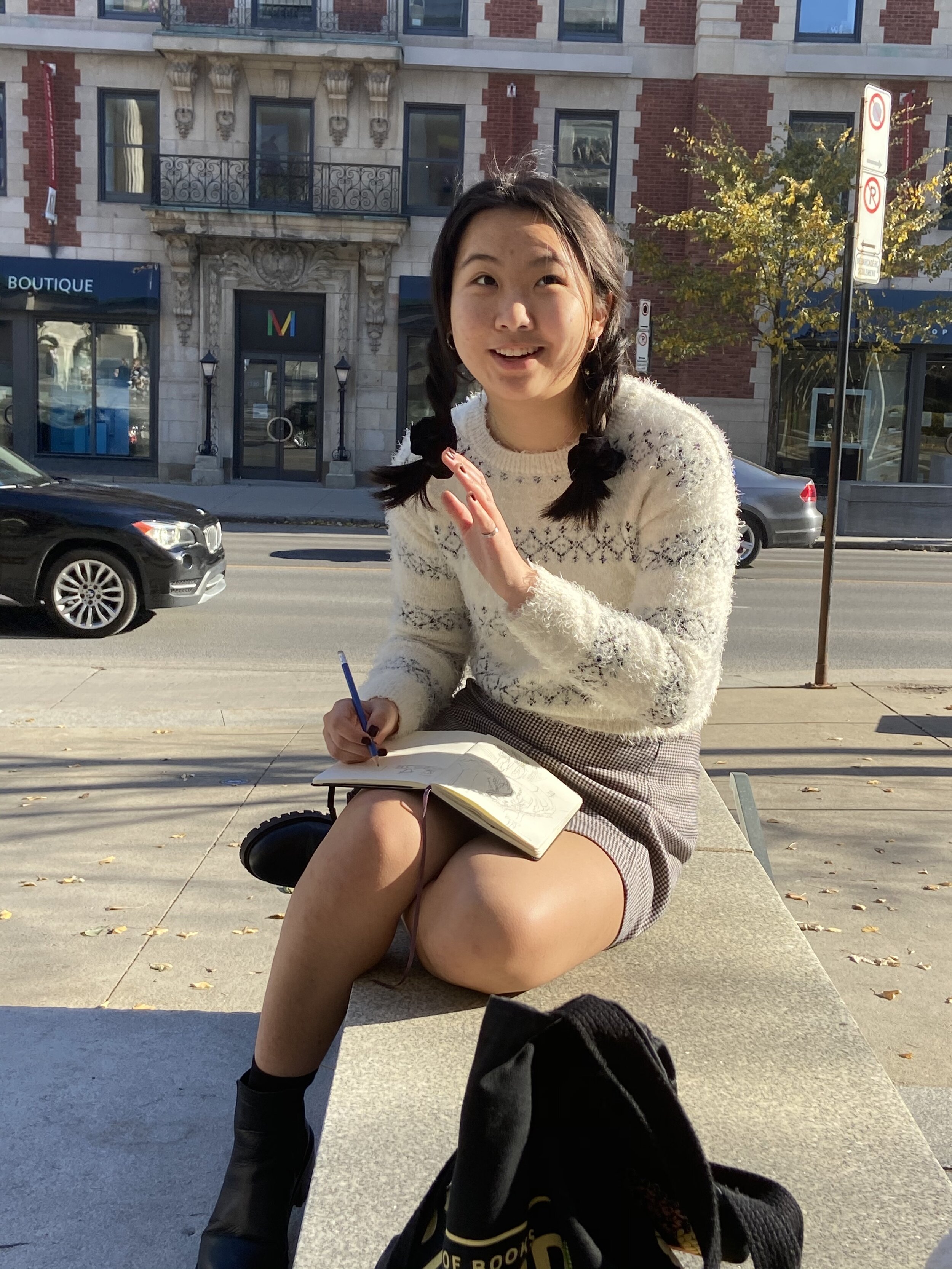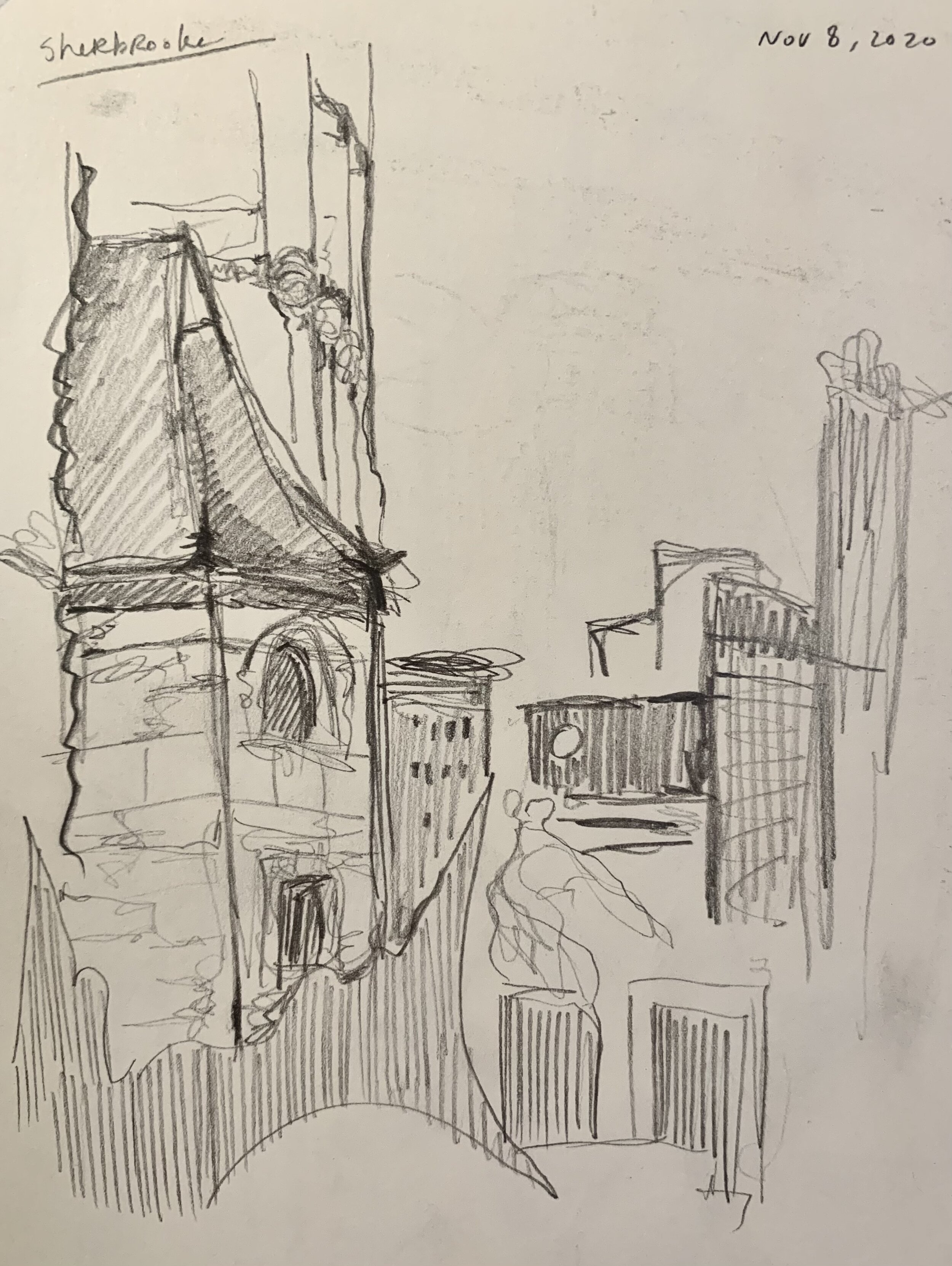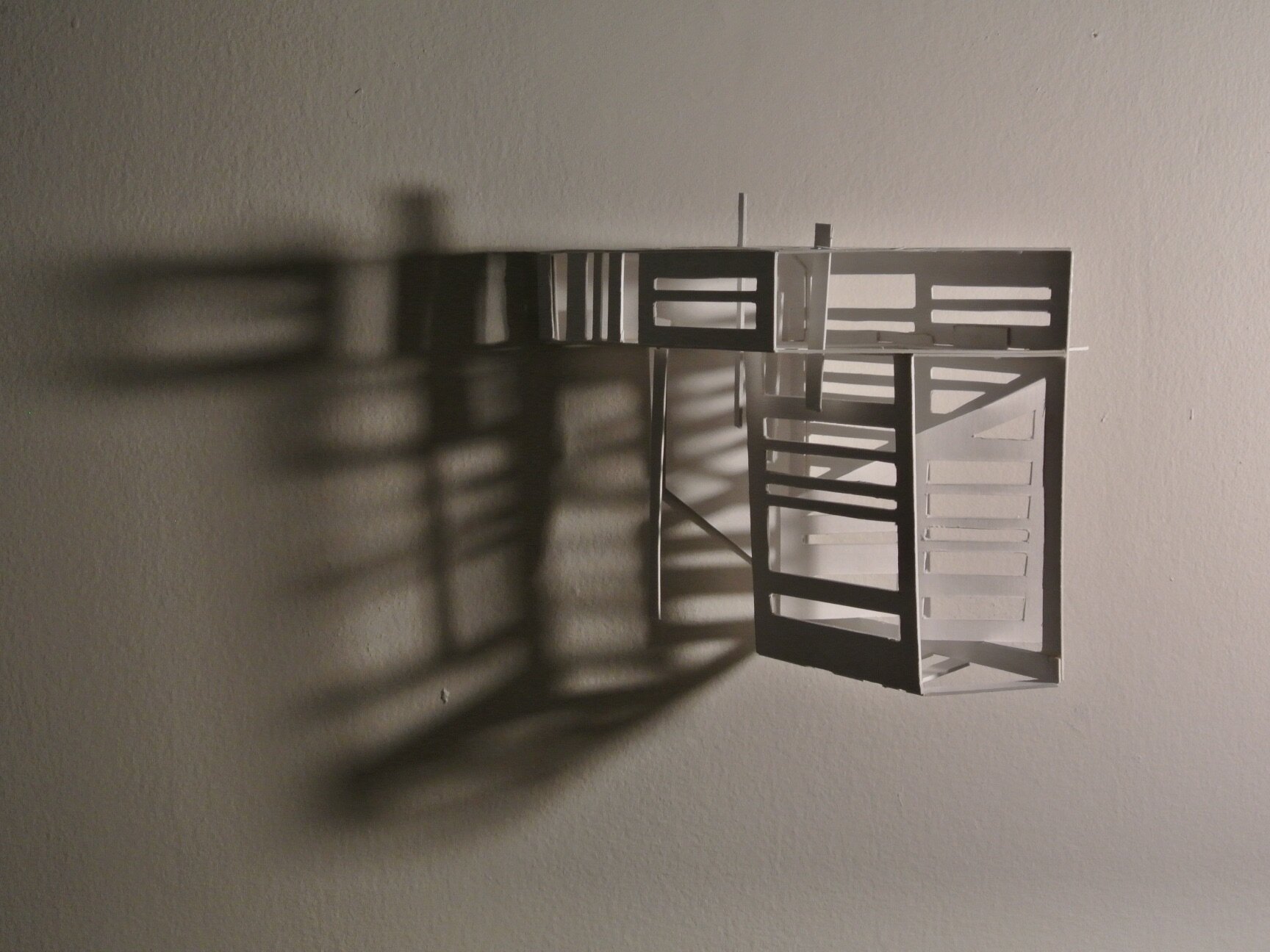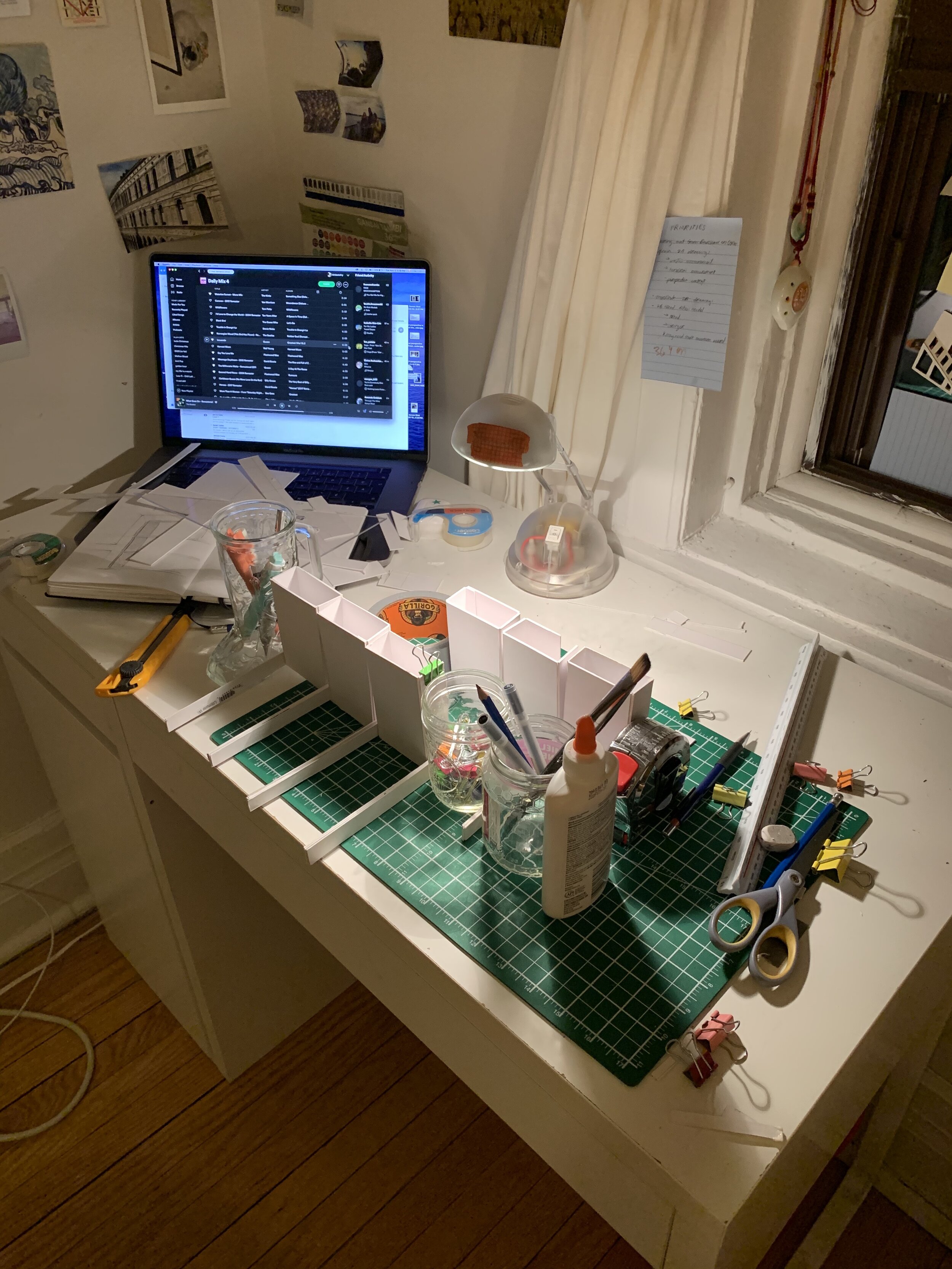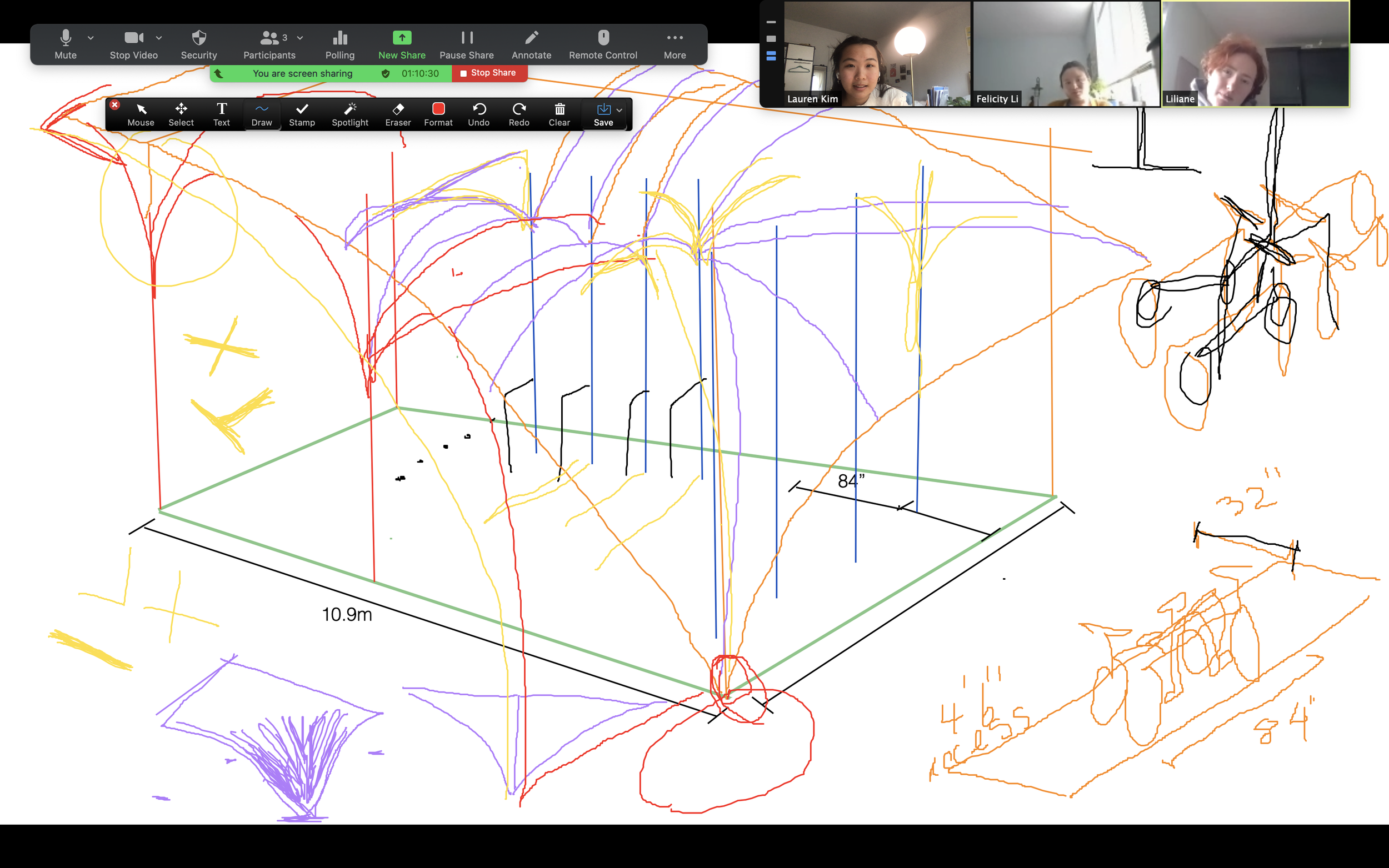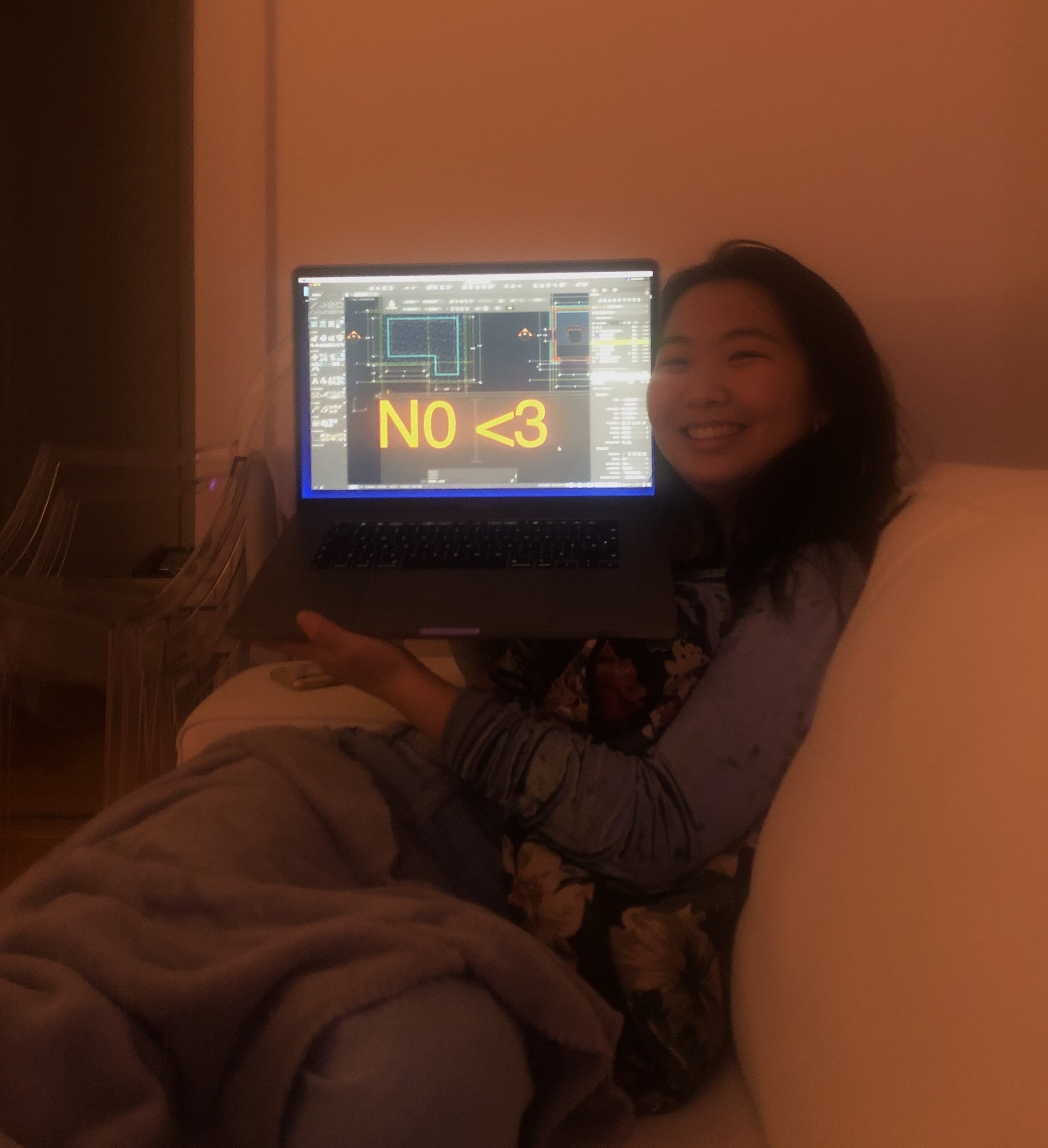LAUREN KIM
Portrait courtesy of Lauren Kim.
Bachelor of Architecture – McGill University’s Peter Guo-hua Fu School of Architecture
Lauren Kim is a first-year undergraduate student at McGill University’s Peter Guo-hua Fu School of Architecture. She was born in Toronto and raised in Montreal where she now lives and studies. In spring of 2020, she graduated from Marianopolis College with a DEC in Arts and Sciences. Her university experience has been completely online so far. Outside of architecture, Lauren is the former Vice President of Finance of the Marianopolis Debate Society and is currently a member of the McGill Debating Union
Navigating First-Year Architecture from Afar
What inspired you to pursue architecture?
Art has always been a form of communication I intrinsically understand, like a language I learned over time through exposure. Drawings are a way for me to share ideas, thoughts, and feelings with others. By contrast, I’ve also explored ways of thinking that attempt to structure and rationalize processes such as debate and hard sciences. There are few key experiences that encouraged me to pursue the creative sphere of my interests through architecture.
As a kid, my mom would take me to museums and gave me a sketchbook so I could draw in the galleries. My earliest memories of art are the atmosphere of massive buildings dedicated to paintings and sculptures. These experiences gave me the impression that art and the places we house art are something people put a lot of thought into.
In secondary school, my art teacher M. Chevalier was a significant mentor who taught me that art is a valuable form of expression. He influenced my interest in visual communication by encouraging me to take risks to push what my projects were trying to convey. Those classes were the first time I genuinely felt comfortable being passionate about artmaking and gave me the space to explore design.
When choosing architecture, I wanted to look at art and design with the rigour I applied to physics, literature, and more generic subjects as a way to see what would happen if I put all my academic energy towards an interest I’ve always been drawn to. My friends have described me as a utilitarian artist, so the practical and technical aspect of architecture functions as a way to explore my personal connection to art in a structured environment.
Drawing at the Children’s Museum of Manhattan, age 6.
Drawing in front of the Montreal Museum of Fine Arts, age 18
Observational sketches, 2020. Photos courtesy of Lauren Kim.
What is the most important thing that you learned in the past year?
Adaptability as a response to change because I learned to see constraints as a way to generate solutions. Creating my portfolio for McGill’s architecture program was my first chance to interact with strict guidelines and communicate my artistic interests within defined boundaries. When I rode the bus to drop off my portfolio on campus, I knew restrictions had forced me to look at my work with a focused perspective that made my intent of demonstrating my passion for design clearer to viewers and myself. Coincidentally, that was also the last time I rode the bus.
This year has been particularly full of unexpected challenges that arose due to forces beyond our control. In March, I felt the pressure to “make the best of the lockdown” but didn’t bring myself to make anything because creating art seemed so futile and fragile. Eventually, I was able to recognize that being open minded about the reality of change is sometimes the only thing you can do. What’s more, the things you make don’t have to be profound to make it meaningful to you and the people you share it with.
When I first got interested in studying architecture, I had a romanticized vision of working in a bustling studio surrounded by like minded students. Starting university in the midst of a pandemic has undermined some of these expectations. Though this timing is another chance to face the unprecedented adjustments that shape my everyday learning environment. In my first semester, I’ve had a lot of fun pushing the limits of the resources at my disposal. The desk I’ve had since I was 12 has become a model making space, classroom, and drafting table. When I rearranged my bedroom to get the right lighting for a model, I realized I created work I was proud of because the need to adapt pushed me to value what’s right in front of me. Letting the resources in my immediate surroundings guide my process has shaped my outlook on what it means to be a student, designer, and person living through a unique time in history.
Photoshoot set up for a studio project
Final photo of model for presentation
Model Making workspace. Photos courtesy of Lauren Kim.
What are some architectural organizations (or specific person/role model) that helped you learn to overcome an obstacle? How did they?
I haven’t been to an in-person class for nearly 10 months, which has made my educational experience more isolating than ever before. School is where I’ve gotten to meet and grow with people through shared experiences. Online classes have undeniably restructured the landscape of the learning environment but getting to know my peers has reassured me that there’s no perfect way to go about this.
Seeing my classmates talk about their projects during desk crits or sharing AutoCAD tips is a reminder that we’re going through similar challenges as we work independently. Even though a Facebook Messenger group doesn’t mirror the experience of chatting in the hallway, our generation’s digital literacy is a huge asset when navigating remote learning. My classmates have taught me so much about the resources at our disposal and I appreciate how open everyone is about sharing knowledge.
Particularly, studio design projects remain a central pillar of the curriculum. Since architecture is grounded in visual communication, overcoming the virtual barrier to collaborate has been a crucial part of my education. A guest critic mentioned that collaborative architecture in this age has been a challenge even for professionals, which reminded me that there’s really no defined precedent for how we should be doing this. Group projects have been an opportunity to try different methods such as sketching an idea out together on Zoom or compiling structural precedents in a Google Drive.
In a way, we’re teaching ourselves solutions to challenges the broader architecture community is also grappling with. Working through these obstacles with other first year students is a fascinating experience since we come from various academic backgrounds and have our own ideas about the same requirements. Projects are a way for us to make decisions together which makes the online learning situation less lonely because it’s centered around cultivating a collective vision. The variety of approaches to conceptualizing plans, structure, and representation among the people I’ve worked with has been exciting because these foundational moments in our design experiences are also a way for us to participate in progress within the architecture field.
Brainstorming with teammates Felicity and Liliane for a bike shelter design project
Struggling to correctly size annotations in AutoCAD. Photos courtesy of Lauren Kim.
If you were given the opportunity to repeat the year, what is one thing you’d do differently?
I’d tell myself it’s okay to focus on one thing. Last autumn when I started applying for university, I was nervous about closing doors for myself. At the time, I was studying Arts and Sciences in cégep and kept up a broad variety of interests. I entertained the idea of majoring in earth sciences and economics, product design, civil engineering, and political science. The ultimate decision to pursue architecture has proven to be the right fit. I know it’s unlikely I’ll be a diplomat or lawyer now but dedicating myself to this field has provided me with a clearer idea of what I want to do in upcoming years.
Letting myself focus on architecture without worrying about missed opportunities in other disciplines was a meaningful shift in perspective. I’ve always been drawn to participating in and examining creative processes so architecture has been an opportunity to take design seriously for the first time. On top of that, I learned to love learning again. This semester, I’ve spent more time on school than ever before and have produced the art I am most proud of. Though simultaneously, it doesn’t feel like work most of the time.
Once I fully focused on using my skills to study architecture, I was able to express my visual ideas at a much higher level. Detail-oriented research skills from my multidisciplinary background are a crucial part of the way I approach studio projects and think about the impact of design. Furthermore, I’ve been debating since middle school which has given me critical thinking and public speaking skills that guide how I communicate my ideas during presentations and crits. If I had seen how applicable other interests are to thinking about design, collaboration, and representation in architecture, I would have been reassured that creative fields were right for me.
British Parliamentary Debating Championships 2019
Pecha Kucha presentation slides. Photos courtesy of Lauren Kim.
As you reflect on the past year, what did you discover as your biggest strengths?
I discovered how to independently follow through with tasks. In retrospect, this shift in my work habits is the result of a couple of factors.
Firstly, starting university was a change in pace that shaped the way I approach what I’m learning. Rather than being motivated by a self-imposed fear of failure, I look at the work I produce for school as opportunities to discover niches of interest within the field of architecture. Assignments are a way for me to be ascribed a letter grade but more importantly, they’re a chance to figure out what kind of art I want to bring into the world.
Secondly, I moved out this past year which drastically changed the environment I work in especially given the remote learning circumstances. The responsibility that comes with living away from home has shaped the way I value my time. I’ve become acutely aware of how little time there is in a day and the fact that I have full control over how I spend it.
Lastly, I love studying architecture. Being passionate about what I get to spend every day doing reminds me why I chose to put myself through it in the first place. That being said, some days are frustrating, exhausting, and discouraging. Mid-way through the semester, I was struggling with a technical drawing of a staircase and I doubted my ability to complete the assignment. Eventually, I got myself together and found the patience to understand what was wrong with the measurements. My perseverance to overcome self-doubt stems from recognizing that walking through the problem-solving process with yourself reaffirms your passion for the subject. This ability to value tackling challenges head on was an important lesson that I’m certain I’ll refine as I grow as a student and artist.
The technical drawing of a staircase in question. Photo courtesy of Lauren Kim.
In terms of rising concerns and problems (in the architectural profession) over the past year, what is one change that you wished would happen and it did not? This can be in an educational or work atmosphere.
The basic act of sketching is fundamental to collaborative architecture. I would love to see the development of a user-friendly program to draw as a group remotely.


